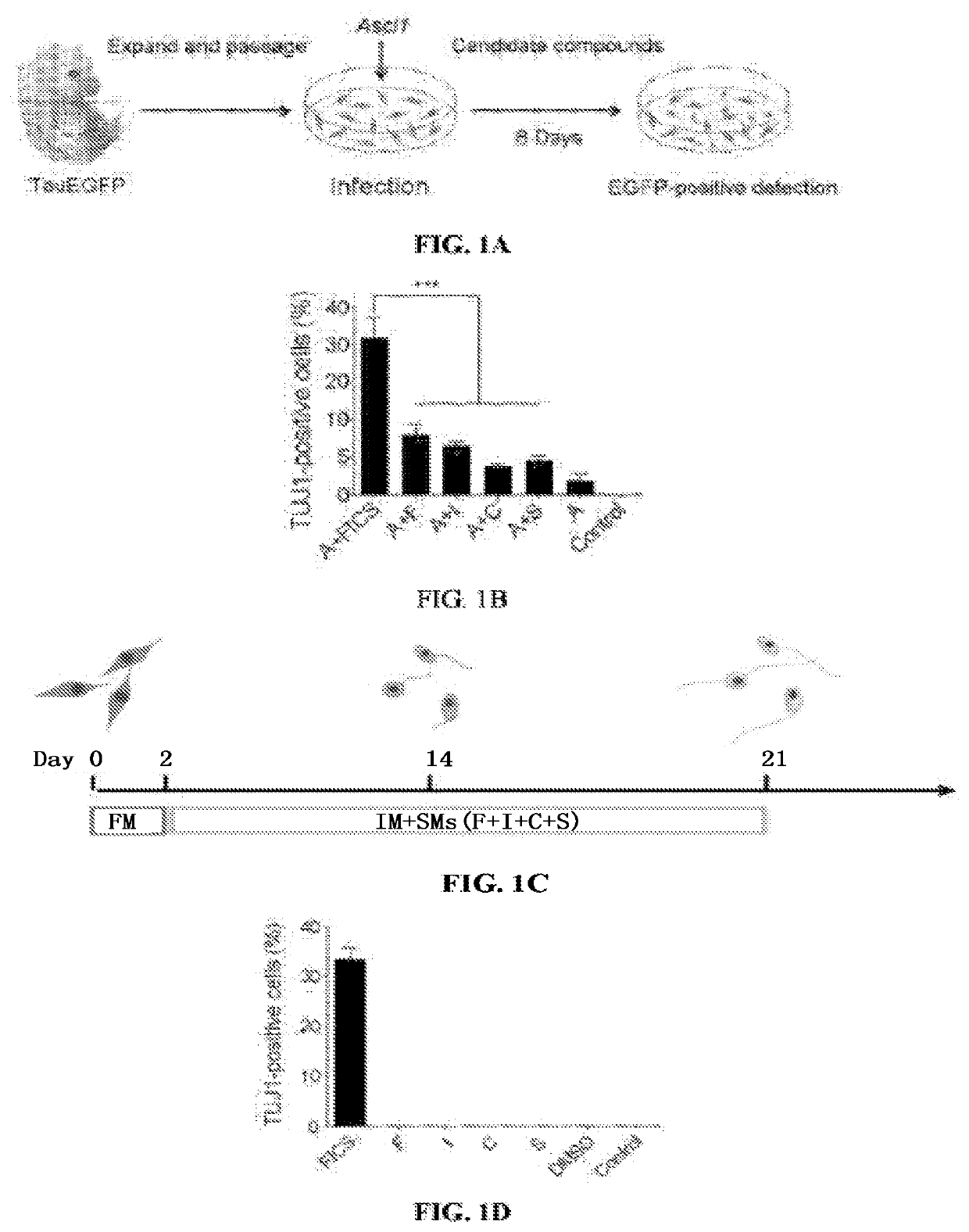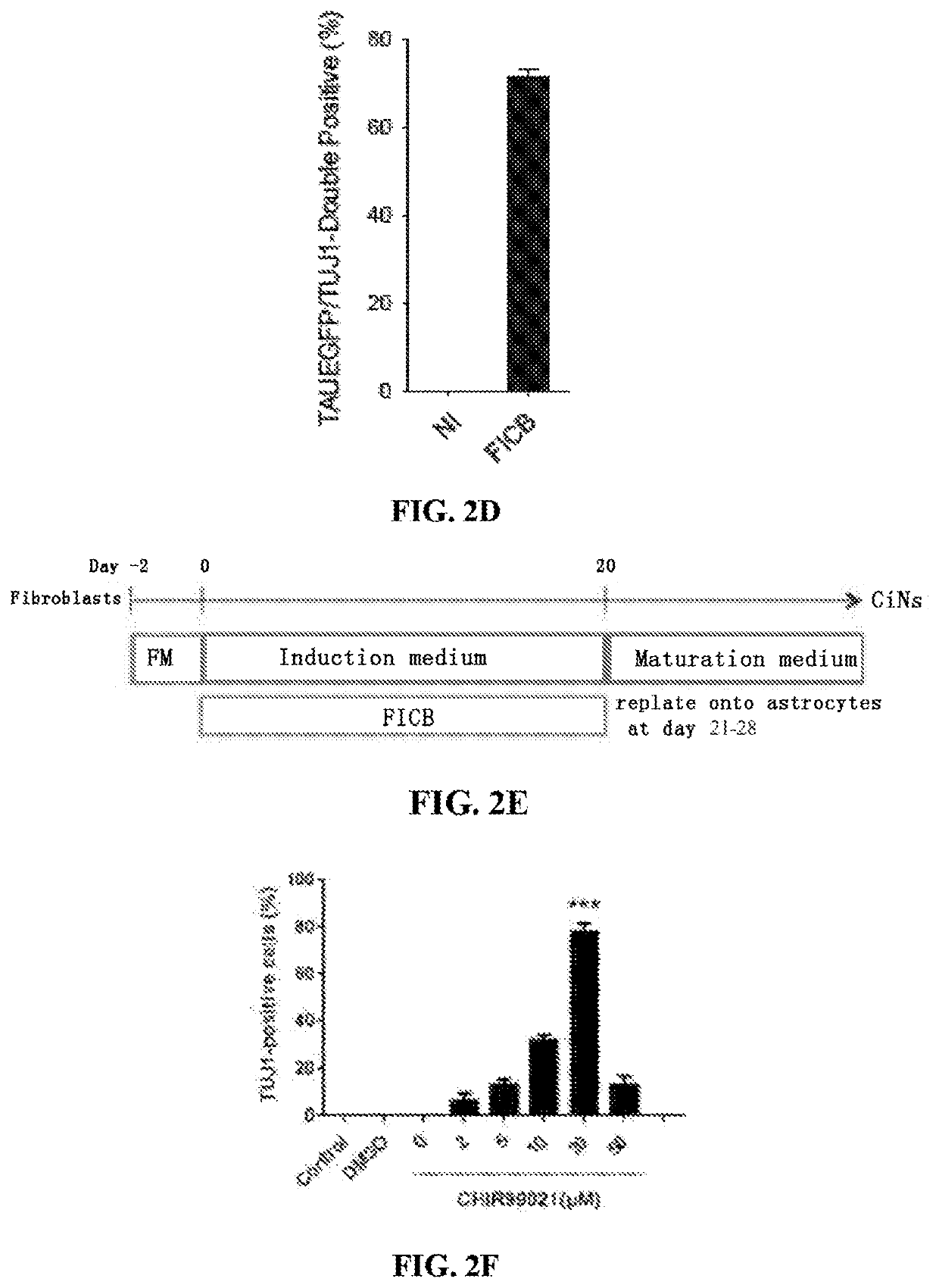Compositions and methods for reprogramming non-neuronal cells into neuron-like cells
a non-neuronal cell and neuron-like cell technology, applied in the direction of drug compositions, non-embryonic pluripotent stem cells, skeletal/connective tissue cells, etc., can solve the problem of low induction efficiency
- Summary
- Abstract
- Description
- Claims
- Application Information
AI Technical Summary
Benefits of technology
Problems solved by technology
Method used
Image
Examples
examples
Experimental Procedures
Cell Culture
[0113]Homozygous TauEGFP knock-in mice (Tucker, et al., Nat Neurosci., 4:29-37 (2001)), FSP1-Cre transgenic mice (Bhowmick, et al., Science, 303:848-851 (2004)) and Rosa-CAG-LSL-tdTomato mice (Madisen, et al., Nat Neurosci., 13:133-140 (2010)) were purchased from Jackson Laboratories. To isolate fibroblasts, TauEGFP heterozygous mice were generated by crossing the homozygous TauEGFP knock-in mice with wild-type mice. FSP1-Cre / ROSA26-tdTomato / TauEGFP mice were generated by crossing the FSP1-Cre transgenic mouse strain, which expresses Cre recombinase under the control of the fibroblast-specific protein 1 (FSP1) promoter (Bhowmick, et al., Science, 303:848-851 (2004); Iwano, et al., J. Clin Invest., 110:341-350 (2002); Strutz, et al., J Cell Biol., 130:393-405 (1995)), with the Rosa26-tdTomato mouse strain (Madisen, et al., Nat Neurosci., 13:133-140 (2010)), in which the Rosa26 locus was inserted using a CAG promoter and was followed by a LoxP-Stop-L...
PUM
| Property | Measurement | Unit |
|---|---|---|
| molecular weight | aaaaa | aaaaa |
| molecular weight | aaaaa | aaaaa |
| molecular weight | aaaaa | aaaaa |
Abstract
Description
Claims
Application Information
 Login to View More
Login to View More - R&D
- Intellectual Property
- Life Sciences
- Materials
- Tech Scout
- Unparalleled Data Quality
- Higher Quality Content
- 60% Fewer Hallucinations
Browse by: Latest US Patents, China's latest patents, Technical Efficacy Thesaurus, Application Domain, Technology Topic, Popular Technical Reports.
© 2025 PatSnap. All rights reserved.Legal|Privacy policy|Modern Slavery Act Transparency Statement|Sitemap|About US| Contact US: help@patsnap.com



